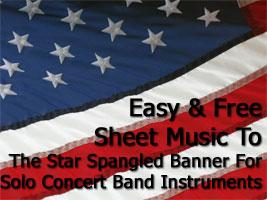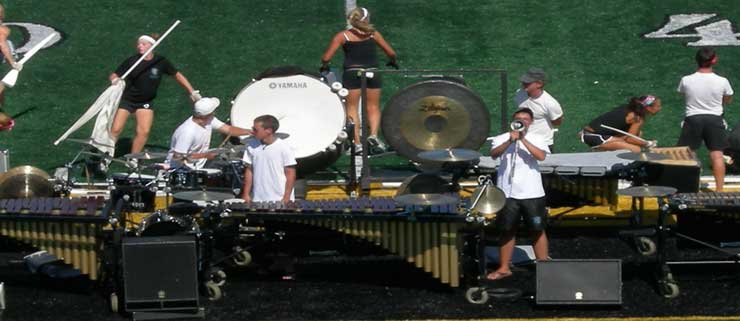 Having taught beginning band for several years now (and high school band for eight years before that) one of the biggest problems that I always face with instrumentation is how to properly start percussionists. We all know that it is absolutely imperative that percussionists be able to play both keyboard and battery instruments with equal precision, but most bands would agree that playing drums almost always is first in a student's mind when they join the band. So how do teachers build a true percussionist instead of one that just wants to be a drummer? There are many different ideas on how to start a good percussion section, and some of these ideas may surprise you.
Having taught beginning band for several years now (and high school band for eight years before that) one of the biggest problems that I always face with instrumentation is how to properly start percussionists. We all know that it is absolutely imperative that percussionists be able to play both keyboard and battery instruments with equal precision, but most bands would agree that playing drums almost always is first in a student's mind when they join the band. So how do teachers build a true percussionist instead of one that just wants to be a drummer? There are many different ideas on how to start a good percussion section, and some of these ideas may surprise you.
Starting Percussionists On Bells Only
Many schools have very limited time for band lessons. Twenty to thirty minutes once a week seems to be the norm, and in that amount of time it is almost impossible to do a good job of building a well rounded percussionist that can excel on both snare and bells. When people try to do both things in a lesson quite often both instruments suffer. One way some schools get around this is to start percussionists on bells only, and in many cases not even touching a piece of battery equipment until many months after the student starts in the program.Â
Pros of Having Percussionists Start on Bells Only:
- If students sign up knowing that they are only going to do bells for the first four months or so only the more dedicated individuals will sign up for percussion, leading to a better overall instrumentation.
- Increased fluency on the bells and the ability to read music notation at the same level that the rest of the band does.
- An increased awareness of how to keep the beat with the rest of the band.
- Increased listening skills when playing with the rest of the ensemble.
- Fewer students may sign up for the instrument and those that do will be more likely to be dedicated to the effort.
Cons of Having Percussionists Start on Bells Only:
- Not having any rhythmic drum accompaniments when doing beginning band pieces
- Not having a steady bass drum beat during rehearsals
- A lack of good bell practice materials in many beginning band methods
- Fewer students may sign up for the instrument
Starting Percussionists on Wind Instruments and Moving Them To Bells and Drums Later
One of the more "outside of the box" ways to build a strong percussion section is to not have a percussion section at all. While this may sound like a silly idea, it has been my experience that the best drummers often are students that I have moved to percussion after they had already shown decent ability on a wind instrument. This is especially true for wind instruments that play in the treble clef as making the transition to playing bells is much easier while at the same time the rhythmic basics of playing in an ensemble have already been learned. In schools that do this no one is allowed to start on drums or bells until they have played another instrument for several months and shown that they are ready and willing to go the extra mile and practice hard on their instrument. While it may seem scary to consider this as an option it does make a lot of sense. Without a strong percussion section the rest of the ensemble will not be as good. Therefore, moving only the more talented and dedicated kids to percussion will give that section a stronger chance of success and the entire band will benefit as a result.Pros of Moving Wind Players Onto Percussion After A Few Months:
- More time to see what students are more likely to be successful on the instrument
- A smaller, more focused percussion section once the switches are made
- More time during lessons to focus on specific problems and techniques instead of switching from bells to snare
Cons of Moving Wind Players Onto Percussion After A Few Months:
- Family and financial issues with trading in rented wind instruments for percussion kits
- Potential for angry students/parents
- Potentially not having a drum section for the first concert of the year
Taking the plunge and changing the way a beginning band program utilizes their percussionists is a big step for any teacher. The general comments on the topic of how best to start new percussionists on forums such as the MENC band forums seem to say that there are far more reasons to do one of these things then there are to not do it, but as with many subjects it is the comfort level of the teacher that makes the biggest difference. Never jump into such a programmatic change without a lot of thought and a commitment to see the changes through to fruition.







 Scroll down to view the comparison chart of over a dozen different portable digital audio recorders.
Scroll down to view the comparison chart of over a dozen different portable digital audio recorders.